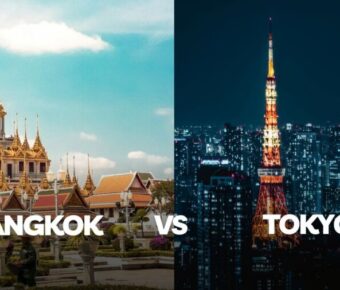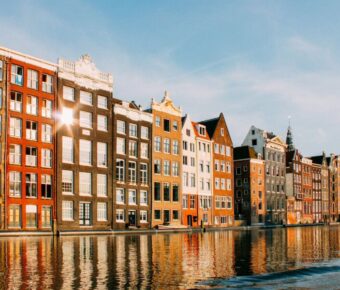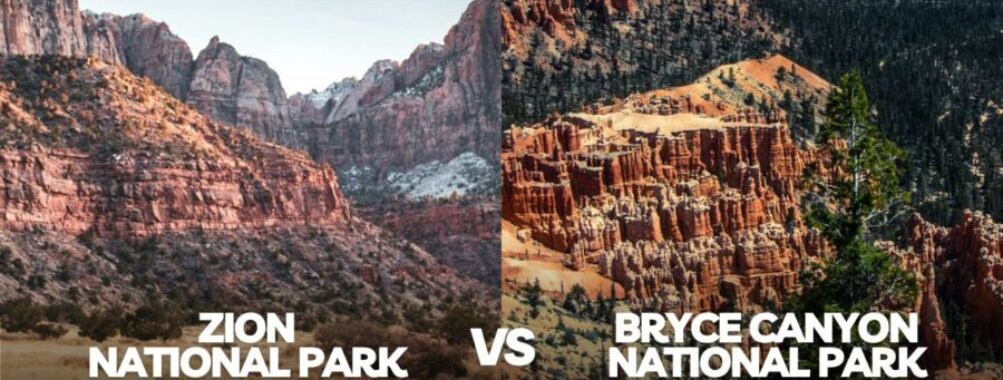
Zion National Park vs Bryce Canyon National Park: 7 Key Differences to Plan Your Ultimate Utah Adventure
Considering a trip to Utah’s stunning national parks? Zion and Bryce Canyon offer completely different experiences that showcase nature’s incredible diversity. At Zion, you hike upward from the valley floor, while at Bryce, you walk along the rim and descend among its famous hoodoo rock formations.
I’ve visited both parks multiple times, and each has unique advantages. Zion tends to be more crowded but offers diverse landscapes and wildlife viewing opportunities across its larger terrain.
The Virgin River carves through colorful sandstone, creating iconic spots like the Narrows. Bryce, though smaller, often has fewer visitors and presents an otherworldly landscape that looks particularly magical at sunrise.
Your travel style matters when choosing between these Utah gems. Active hikers might prefer Zion’s challenging trails, while photographers could favor Bryce’s distinctive formations. Many visitors try to experience both parks since they’re only about 80 miles apart – and trust me, they’re both worth seeing!
Contents
- Geography and Locations
- Proximity to Major Cities
- Landscapes and Terrain
- Unique Features of Each Park
- The Majestic Hoodoos of Bryce Canyon
- Zion’s Iconic Virgin River and Canyon Vistas
- Hiking and Adventure Opportunities
- Signature Trails and Hiking Experiences
- Excursions for the Intrepid Explorer
- Recreation and Amenities
- Campground and Lodging Options
- Transportation within the Parks
- Visitor Experiences and Accessibility
- Peak Season and Visitor Traffic
- Accessibility for All Travelers
- Conservation Efforts and Park Management
- Sustainable Tourism and Visitor Impact
- Wildlife and Habitat Protection
- Photographic Opportunities and Scenic Views
- Capturing the Unique Landscapes
- Stargazing and Dark Skies
- Frequently Asked Questions
- What are the key differences in the hiking experiences between Zion National Park and Bryce Canyon National Park?
- Can you compare the crowd sizes and visitation trends of Zion and Bryce Canyon throughout the year?
- Which park would you recommend for a family with young children, Zion or Bryce Canyon?
- How do the scenic views and geological features differ between Zion National Park and Bryce Canyon National Park?
- What are the recommendations for splitting time between Zion and Bryce if you have a limited itinerary?
- Could you provide insight on the seasonal weather variances that could impact a visit to either Zion or Bryce Canyon?
- More Travel Guides
Geography and Locations
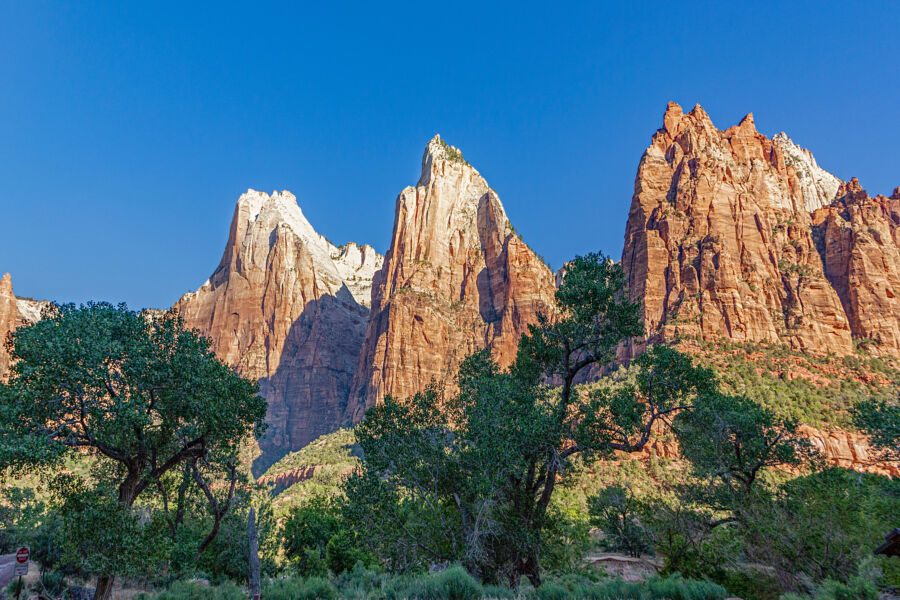
Zion and Bryce Canyon National Parks are relatively close to each other in southern Utah, yet they showcase dramatically different landscapes. Both parks form part of the Grand Staircase, a massive sequence of sedimentary rock layers that stretch from the Grand Canyon to Bryce Canyon.
Proximity to Major Cities

Zion National Park sits in southwestern Utah, about 160 miles from Las Vegas, making it accessible for weekend trips. The charming town of Springdale serves as Zion’s gateway community, offering lodging and dining options right outside the park entrance.
Bryce Canyon National Park is located about 80 miles northeast of Zion. It’s a bit more remote, approximately 270 miles from Las Vegas. The small community of Bryce sits near the park entrance but offers fewer amenities than Springdale.
Both parks are part of Utah’s “Mighty 5” national parks and can be visited during the same trip. Many travelers combine them in a single journey, often starting at Zion and then heading to Bryce, following the geological progression of the Grand Staircase.
Landscapes and Terrain
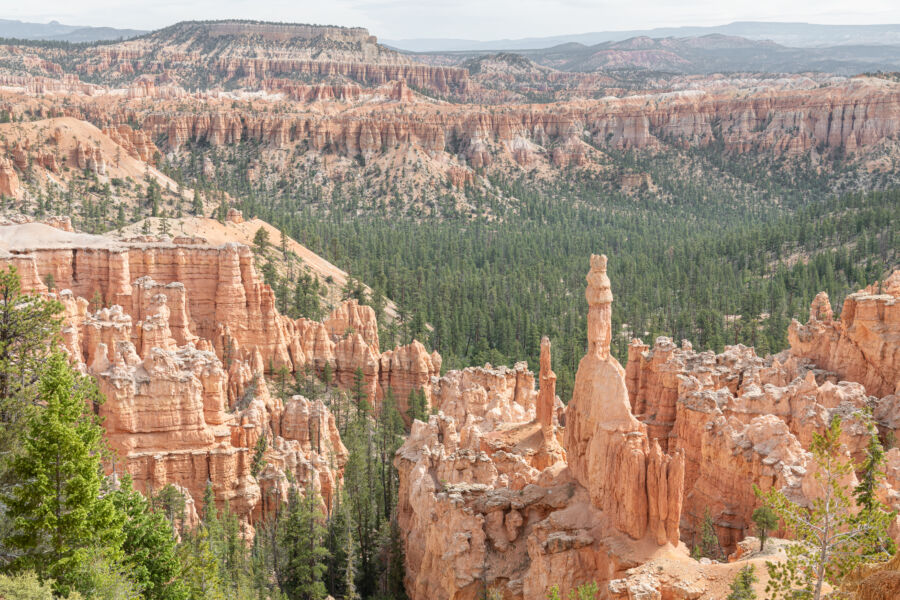
Zion features massive canyon walls and steep red cliffs that tower 2,000 feet above the canyon floor. The Virgin River carved this dramatic landscape, creating slot canyons and unique formations like the Court of the Patriarchs and Angels Landing.
The park sits at elevations ranging from 3,700 to 8,700 feet, creating diverse ecosystems from desert to forest. Zion’s main canyon runs north to south, with narrow passages that sometimes span just 20-30 feet across at their base.
Bryce Canyon isn’t actually a canyon but a series of natural amphitheaters filled with colorful hoodoos—tall, thin spires of rock. These unique formations result from frost weathering and erosion. The park sits at a higher elevation (8,000-9,000 feet) than Zion, offering cooler temperatures and different vegetation.
The terrain at Bryce is more open, providing panoramic views across the amphitheaters filled with thousands of orange, red, and white hoodoos. This creates an otherworldly landscape that contrasts with Zion’s vertical canyon walls.
Unique Features of Each Park

Zion and Bryce Canyon National Parks offer completely different landscapes despite being only about 75 miles apart. Each park showcases nature’s artistry through distinctive geological features that create unforgettable experiences for visitors.
The Majestic Hoodoos of Bryce Canyon
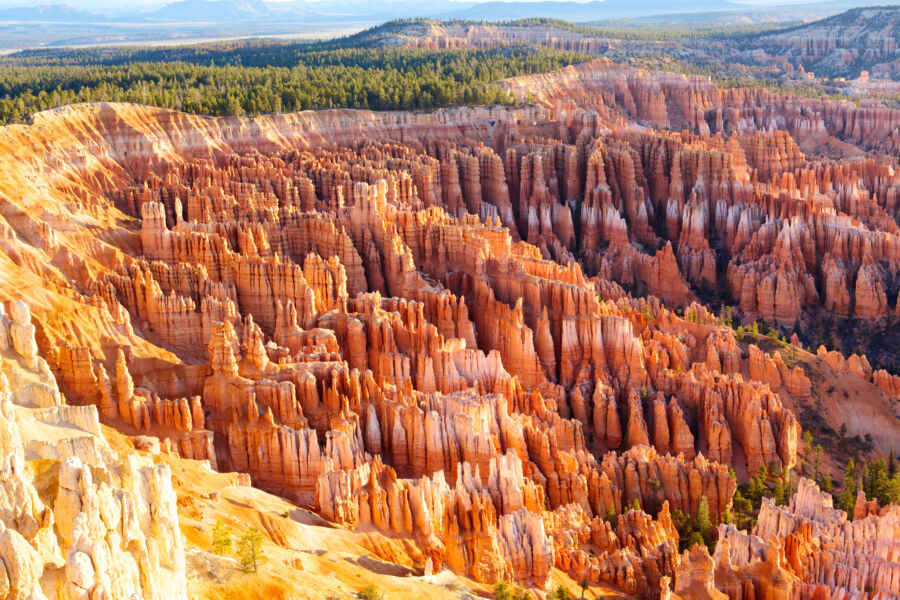
Bryce Canyon is famous for its otherworldly hoodoos – tall, thin rock spires that rise from the canyon floor. These orange, red, and pink sandstone formations create a fairytale landscape unlike anywhere else.
The main amphitheater area contains the highest concentration of these unique formations. Sunrise and sunset transform the hoodoos into a glowing landscape as light plays across their surfaces.
Bryce’s hoodoos formed through frost-wedging, in which water seeps into cracks, freezes, expands, and gradually splits the rock. This process repeated over thousands of years.
Hiking the Navajo Loop or Queen’s Garden trails puts you right among these stone sentinels. The view from Inspiration Point gives you a panoramic vista of thousands of hoodoos stretched across the amphitheater.
Zion’s Iconic Virgin River and Canyon Vistas
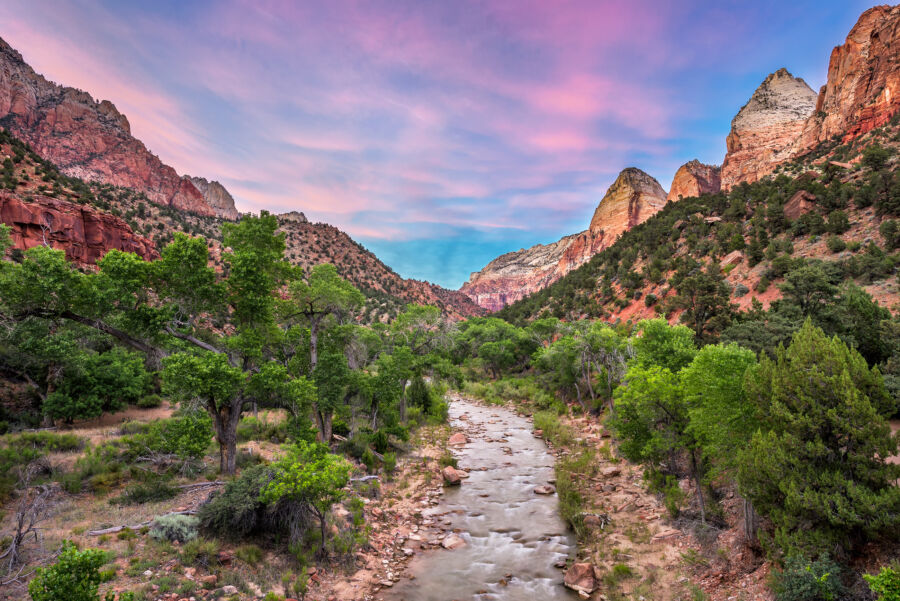
Zion National Park centers around the dramatic Zion Canyon, carved by the Virgin River over millions of years. Massive sandstone cliffs rise 2,000+ feet from the canyon floor in striking red, cream, and pink layers.
The Virgin River continues shaping the park today. It created The Narrows, where canyon walls close to just 20-30 feet apart in some spots. Hiking through the river between towering walls is an unforgettable experience.
Angels Landing provides one of the most thrilling hikes in the National Park system. The trail climbs 1,500 feet and includes sections with chains for safety along narrow ridges with 1,000-foot dropoffs on either side.
The Riverside Walk follows the Virgin River through lush hanging gardens and waterfalls. The contrasting greenery against red rock walls shows how the river brings life to this desert environment.
See Related: Irresistibly Useful Vacation Tips to Transform Your Next Trip
Hiking and Adventure Opportunities

Both parks offer incredible hiking experiences, but due to their unique landscapes, they offer very different adventures. Zion invites you to explore from the bottom up, while Bryce challenges you to descend into its hoodoo-filled amphitheaters.
Signature Trails and Hiking Experiences
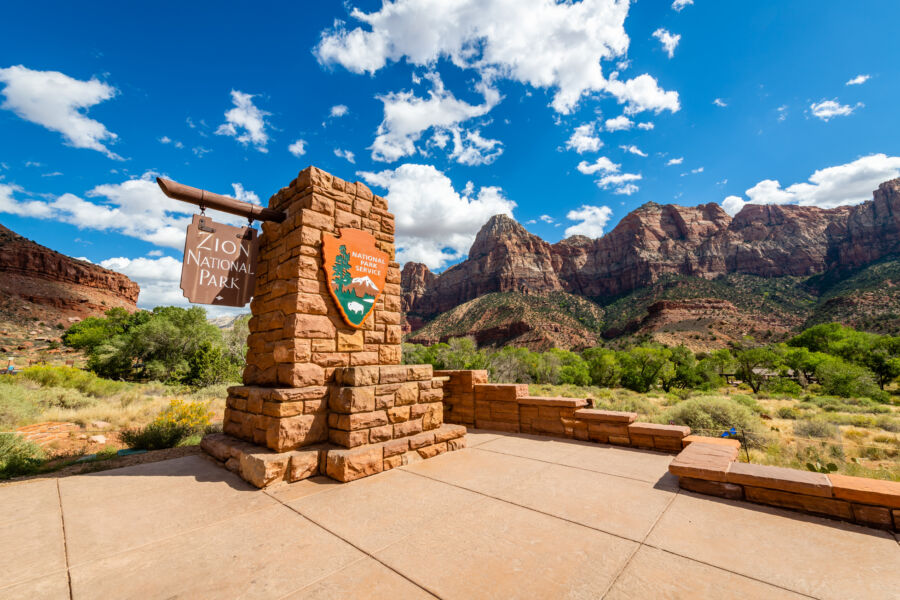
Angels Landing in Zion is one of America’s most thrilling hikes. This 5-mile trail includes the famous chain section where hikers grip metal supports while navigating a narrow ridge with 1,000-foot drops on either side. The views are worth every careful step!
Another Zion highlight is The Narrows, a stunning slot canyon with walls stretching up to 1,000 feet. Hikers wade through the Virgin River, sometimes in knee-deep water. Many visitors start with the easier Riverside Walk before venturing into the canyon.
In Bryce, the Rim Trail offers spectacular views of the hoodoos from above. For a closer look, the Queen’s Garden/Navajo Loop combo (about 3 miles) takes you down among the colorful rock formations.
Excursions for the Intrepid Explorer
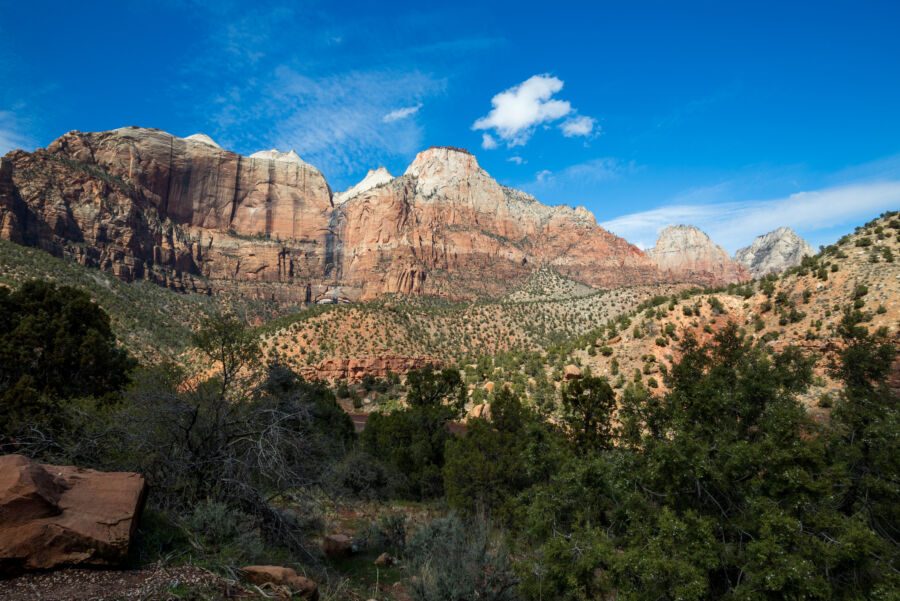
Zion’s backcountry offers multi-day adventures for serious hikers. The West Rim Trail (16 miles) provides stunning canyon views and can be done overnight. The Subway requires permits but rewards explorers with otherworldly rock formations and emerald pools.
Bryce’s backcountry is less crowded but equally rewarding. The Under-the-Rim Trail stretches 23 miles from Bryce Point to Rainbow Point, offering solitude among bristlecone pines and remote hoodoo formations.
Winter brings unique opportunities in both parks. Snowshoeing along Bryce’s rim provides a magical contrast between white snow and orange rock.
In Zion, the canyon floor trails become peaceful retreats compared to the summer crowds. Zion offers canyoneering routes through narrow slots for those seeking technical challenges, while Bryce’s Fairyland Loop (8 miles) tests endurance with significant elevation changes.
Recreation and Amenities
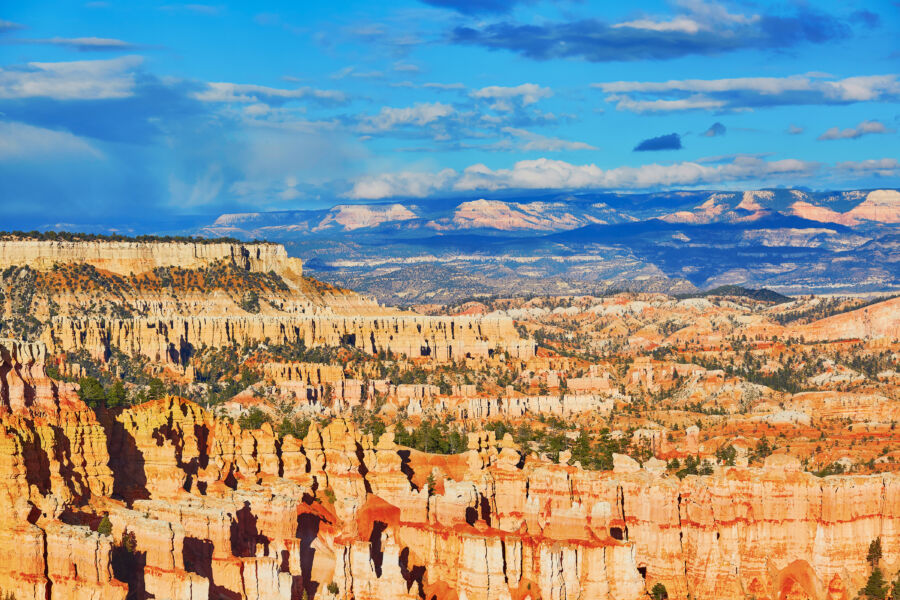
Both parks offer unique recreational opportunities and visitor services that enhance your park experience. The amenities available at Zion and Bryce Canyon differ based on their size, popularity, and natural features.
Campground and Lodging Options

Zion National Park provides more extensive lodging options than Bryce Canyon. The historic Zion Lodge sits inside the park, with motel rooms and cabins available year-round. Zion offers three campgrounds: Watchman and South, near the south entrance, and Lava Point in the high country.
Watchman Campground accepts reservations, which is helpful during busy seasons. South Campground operates on a first-come, first-served basis.
Bryce Canyon has two campgrounds – North and Sunset – near the visitor center. North Campground stays open year-round, while Sunset operates seasonally. The historic Bryce Canyon Lodge provides rustic cabin accommodations from April through November.
Both parks have nearby towns with additional lodging options. Springdale sits just outside Zion, while Bryce Canyon City provides alternatives near Bryce.
Transportation within the Parks
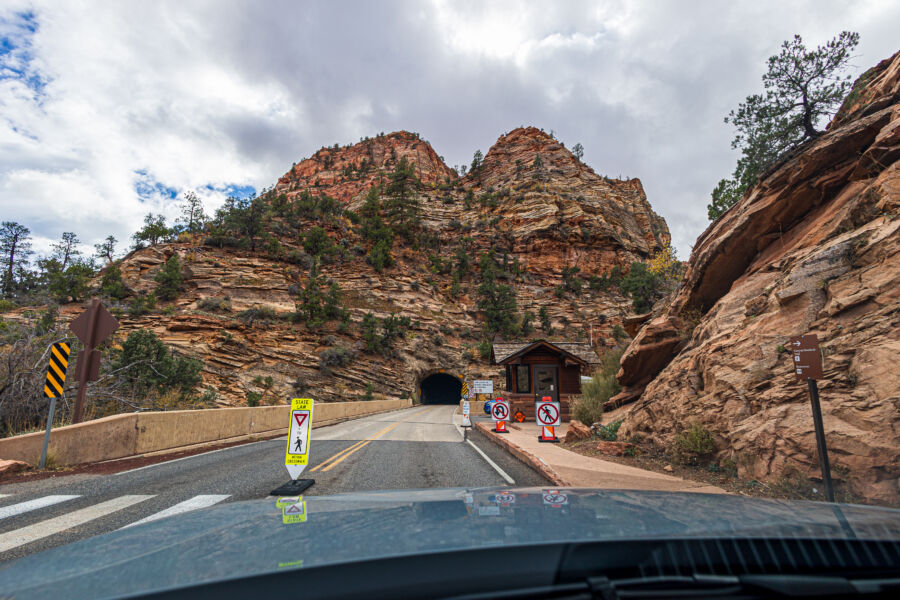
Zion National Park operates a mandatory shuttle system during busy seasons (typically March through November). Private vehicles aren’t allowed in Zion Canyon during these times, making the shuttle essential for accessing popular trails like Angels Landing and The Narrows.
The shuttle system includes two routes: one through Springdale town and another within the canyon itself. Buses run frequently throughout the day, reducing traffic congestion and parking issues.
Bryce Canyon offers an optional shuttle service during the summer months. Unlike Zion, you can drive your vehicle throughout Bryce year-round. This gives you more flexibility to explore at your own pace.
The Bryce Shuttle makes stops at all major viewpoints along the rim, making it convenient for hikers walking one-way routes. The free shuttle with park admission helps reduce parking congestion during peak times.
Visitor Experiences and Accessibility
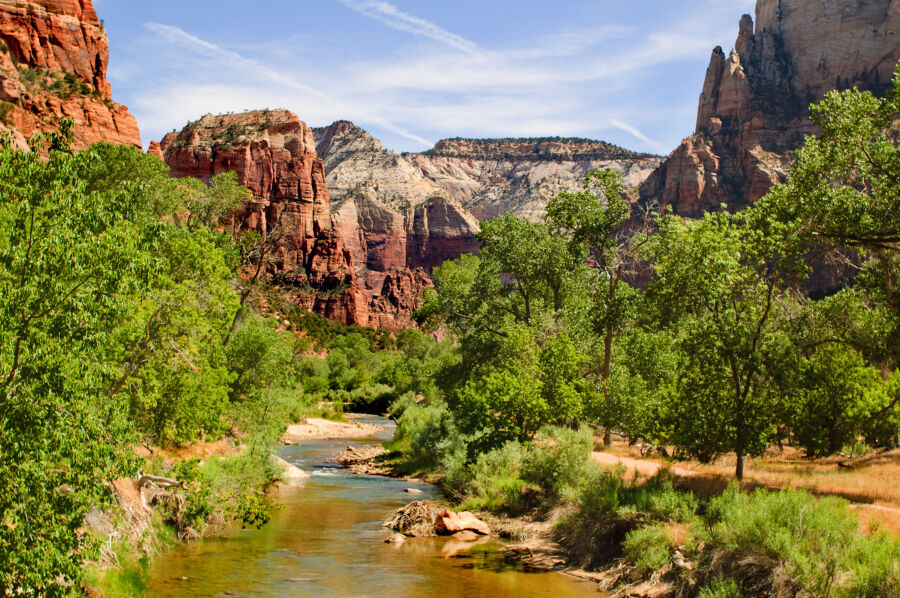
Both parks offer unique visitor experiences but differ significantly in how you’ll experience them and who can access their natural wonders. The parks have different approaches to managing crowds and varying levels of accessibility for visitors with mobility challenges.
Peak Season and Visitor Traffic
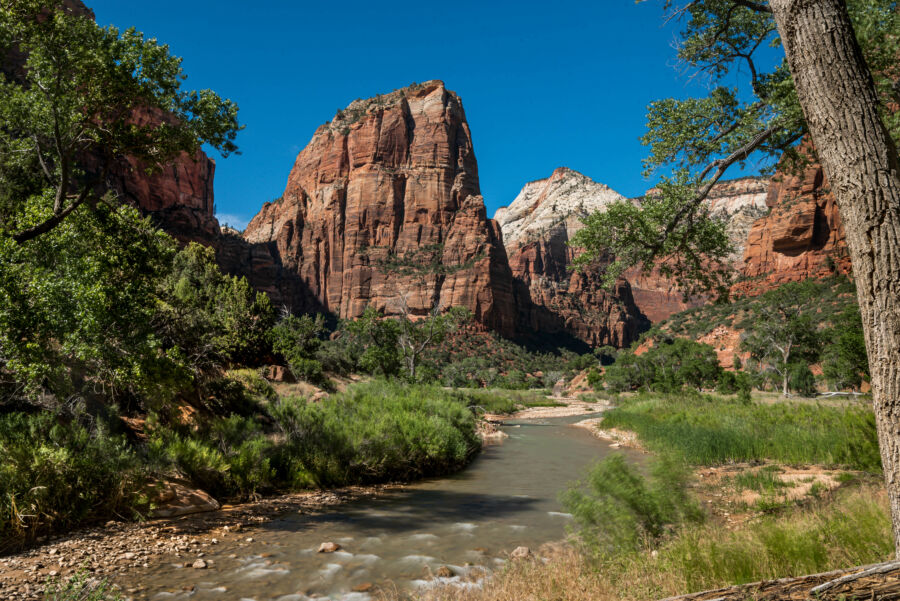
Zion National Park tends to be much more crowded than Bryce Canyon, especially during the summer. Visitors must use shuttle buses from May through September to access the main canyon, as private vehicles aren’t allowed on Zion Canyon Scenic Drive.
Wait times for shuttles can stretch to an hour or more during peak hours. Planning your visit early in the morning or late afternoon helps avoid the worst crowds.
While still popular, Bryce Canyon generally feels less congested. You can drive your vehicle to most viewpoints, which gives you more flexibility in your schedule. The rim trail offers spectacular views without requiring you to descend into the canyon.
Many visitors find Bryce more manageable for spontaneous visits since you can see the iconic hoodoo formations from accessible overlooks without lengthy hikes.
Accessibility for All Travelers

Both parks have tried accommodating visitors with mobility challenges, but Bryce Canyon may have an edge for those with limited mobility. Bryce offers fourteen accessible overlooks with relatively level, paved paths along the canyon rim.
These provide stunning views of the hoodoo formations without requiring difficult hikes. The main viewpoints like Sunrise, Sunset, Inspiration, and Bryce Points have wheelchair-accessible paths and facilities.
Zion’s accessibility varies by area. The Visitor Center, museum, and shuttle buses are wheelchair accessible, and the Pa’rus Trail is paved and suitable for wheelchairs and strollers.
However, many of Zion’s most famous attractions require hiking on uneven terrain. Both parks provide detailed accessibility information on their websites and at visitor centers to help plan your visit.
See Related: Best Winter Destinations in the US: Snowy Escapes You Can’t Miss
Conservation Efforts and Park Management
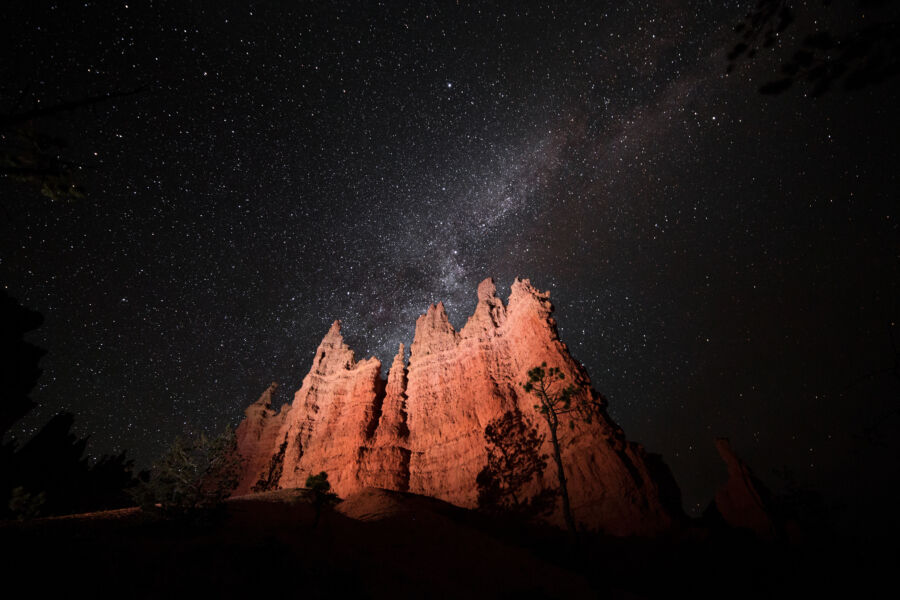
Both parks face challenges with growing visitor numbers while protecting the unique ecosystems. The National Park Service employs various strategies to balance tourism with environmental protection across these iconic Utah landscapes.
Sustainable Tourism and Visitor Impact
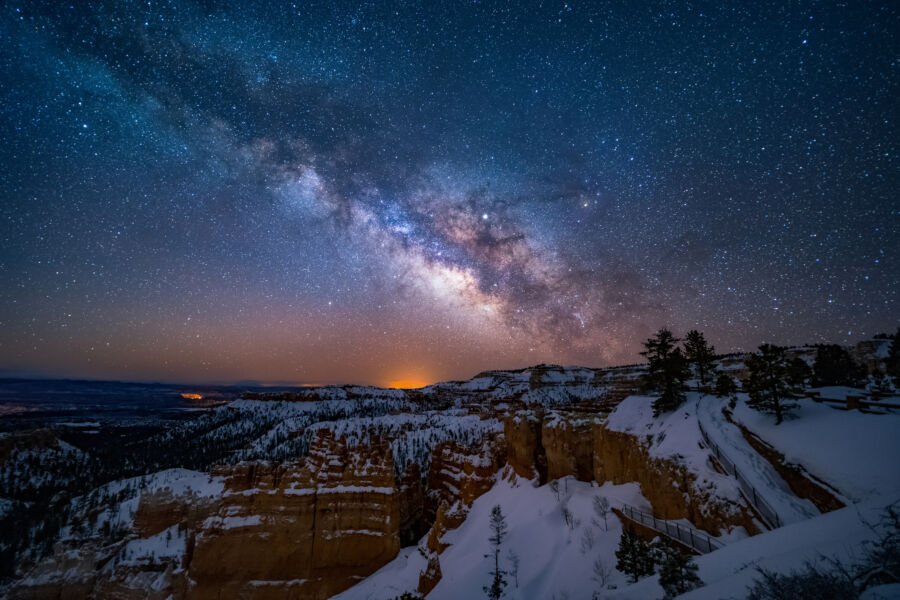
Zion National Park implemented a mandatory shuttle system in 2000 to reduce traffic congestion and air pollution in the main canyon. During peak season, private vehicles aren’t allowed on the Zion Canyon Scenic Drive, which has dramatically decreased emissions within the park.
Bryce Canyon takes a different approach. While shuttles are available, they’re optional for visitors. Instead, Bryce focuses on boardwalks and marked trails to keep tourists from wandering off-path and damaging the fragile hoodoos.
Both parks participate in the Dark Sky Initiative. Bryce earned official Dark Sky Park status in 2019, implementing special lighting to minimize light pollution. This protects nocturnal wildlife and allows visitors to experience spectacular stargazing opportunities.
Wildlife and Habitat Protection
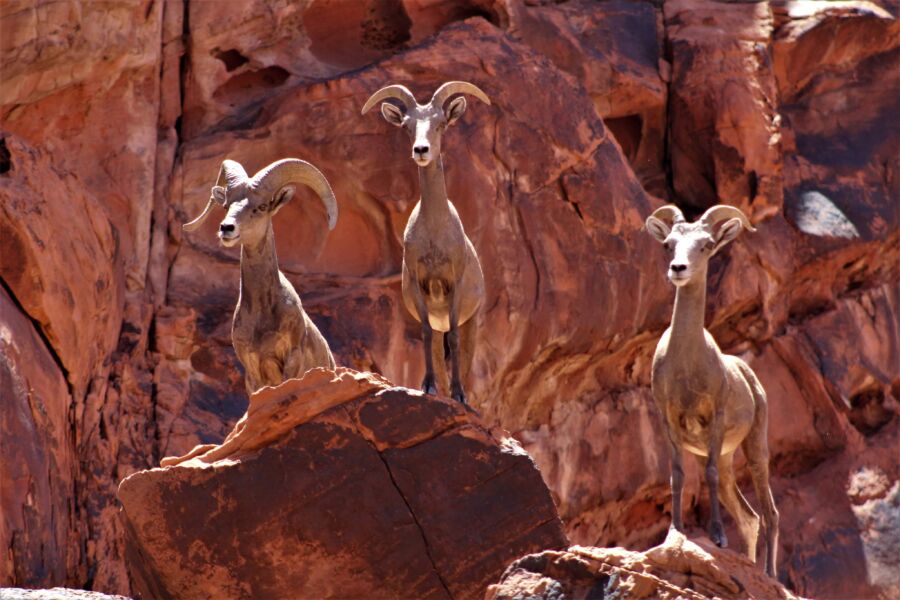
Zion protects critical habitat for 78 mammal species, including the endangered Mexican spotted owl. Park biologists monitor these populations and work to reduce human impacts on sensitive areas. Seasonal trail closures protect falcon nesting sites.
The Northern Colorado Plateau Network monitors various environmental factors in both parks, including air quality, climate, and invasive species. This data helps park managers make informed conservation decisions.
Bryce Canyon’s higher elevation creates unique habitat challenges. Rangers actively manage forest health to prevent catastrophic wildfires while maintaining natural ecosystem processes. The park also runs education programs about the fragile soil crust that, once damaged, can take decades to recover.
Photographic Opportunities and Scenic Views
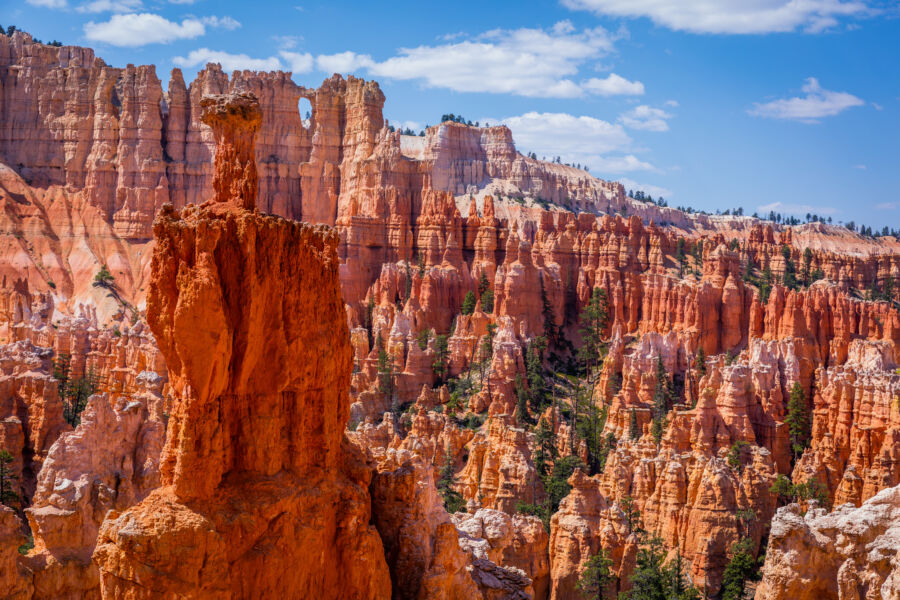
Both parks offer incredible landscapes for photographers with dramatically different features. Zion’s massive canyon walls contrast Bryce’s intricate hoodoos, giving visitors distinct visual experiences.
Capturing the Unique Landscapes
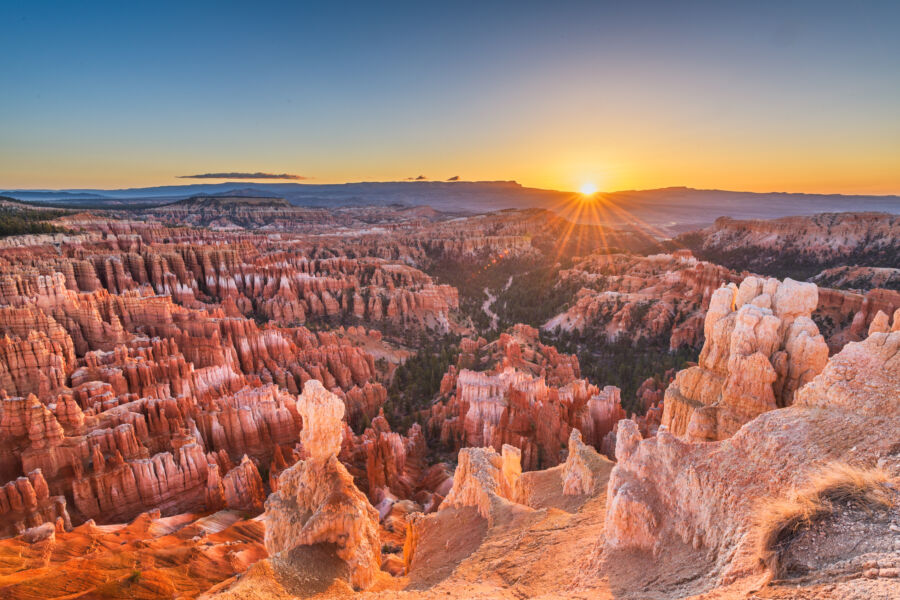
Photographers can capture towering sandstone cliffs at Zion National Park. These cliffs change color throughout the day.
The warm morning light creates a golden glow on the east-facing walls, perfect for photos. The Narrows and Angel’s Landing provide dramatic vistas. Here, the scale of the canyon walls can be fully appreciated.
Bryce Canyon offers something completely different. Its famous hoodoos—tall, thin spires of rock—create an otherworldly landscape that’s especially magical at sunrise. The amphitheater view from Sunrise Point or Sunset Point gives photographers an incredible panorama of these formations.
The different elevations of these parks also affect photography conditions. Bryce sits thousands of feet higher than Zion, resulting in different lighting and weather patterns. Spring and fall often provide the most interesting photography conditions in both parks.
Stargazing and Dark Skies
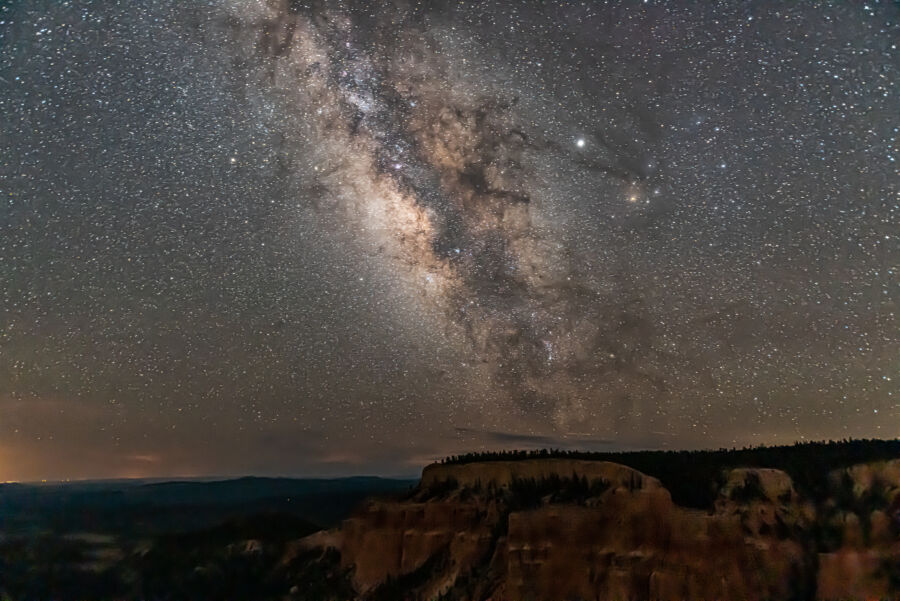
Both parks are renowned for their exceptional dark sky viewing but offer slightly different experiences. Bryce Canyon National Park is certified as an International Dark Sky Park and sits at a higher elevation, providing clearer night sky views.
The park even runs night sky programs, where rangers point out constellations and explain celestial phenomena. Photographers can capture stunning images of the Milky Way arching over the distinctive hoodoo formations.
Zion also offers excellent stargazing opportunities. Its lower elevation and deeper canyons create different framing options, and the massive canyon walls can be used as dramatic foreground elements in night photography.
Plan your visit around the new moon when the skies are darkest for the best results. Both parks limit artificial lighting, allowing the stars to shine with remarkable clarity not found in more developed areas.
See Related: Grand Canyon National Park vs Bryce Canyon National Park: Stunning Differences Every Explorer Should Know
Frequently Asked Questions
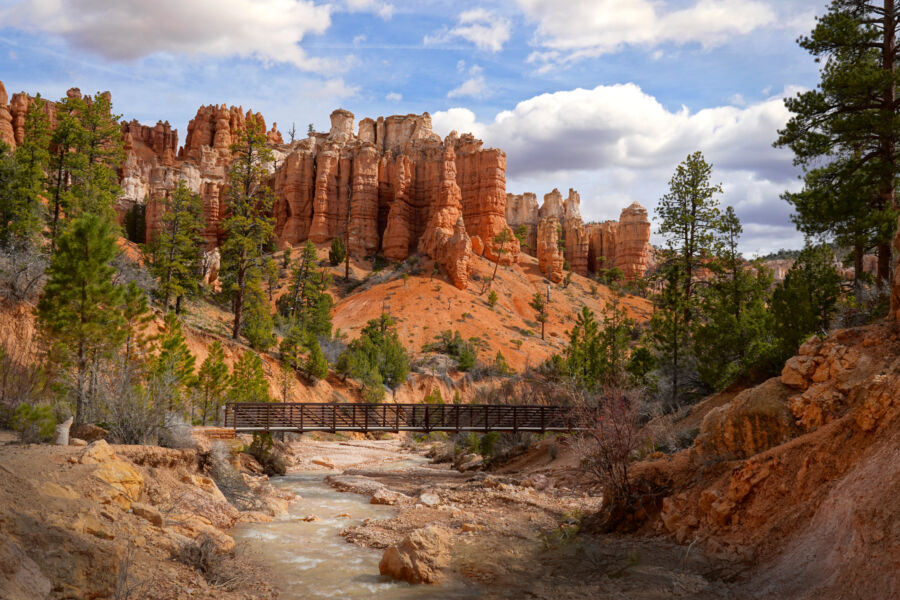
When deciding between these two amazing national parks, let’s answer visitors’ common questions. Both offer unique experiences, but understanding their differences can help you plan the perfect trip.
What are the key differences in the hiking experiences between Zion National Park and Bryce Canyon National Park?
Zion offers more diverse hiking terrain with trails that range from riverside walks to challenging canyon climbs. The park features iconic hikes like Angels Landing and The Narrows, which involve wading through water.
Bryce Canyon’s trails focus more on viewing the unique hoodoo rock formations. Most hikes take you into the amphitheater and back up, creating a different experience than Zion’s varied landscapes.
Zion’s trails often involve more elevation gain and technical challenges, while Bryce’s popular trails are shorter but still offer spectacular scenery. Many visitors find Bryce’s trails more manageable for casual hikers.
Can you compare the crowd sizes and visitation trends of Zion and Bryce Canyon throughout the year?
Zion typically sees significantly larger crowds than Bryce Canyon throughout the year. During peak summer, Zion can become extremely congested, especially along popular trails and shuttle routes.
While still popular, Bryce Canyon offers a more peaceful experience with fewer people. This is particularly true during shoulder seasons and weekdays.
Winter visitation differs dramatically between the parks. Zion remains accessible year-round with reduced crowds, while Bryce’s higher elevation means snow coverage and chillier temperatures, attracting a different kind of visitor.
Which park would you recommend for a family with young children, Zion or Bryce Canyon?
Bryce Canyon is often more manageable for families with young children. The main viewpoints are easily accessible, and even a short walk along the rim provides spectacular views of the hoodoos below.
Zion can be challenging with little ones due to the shuttle system, crowds, and more strenuous trails. However, the Pa’rus Trail and Riverside Walk are family-friendly options that showcase Zion’s beauty.
Both parks offer Junior Ranger programs that kids love, but Bryce’s compact size makes it easier to see the highlights in a shorter time, which works well with children’s attention spans.
How do the scenic views and geological features differ between Zion National Park and Bryce Canyon National Park?
Zion features massive sandstone cliffs, narrow slot canyons, and the Virgin River cutting through colorful rock layers. The views are often upward at towering walls or down into deep canyons.
Bryce Canyon is famous for its thousands of delicate hoodoos – spire-shaped rock formations in orange, pink and red hues. The views look down into amphitheaters filled with these unique structures.
The color palettes differ, too. Zion showcases cream, pink, and red sandstone walls, while Bryce dazzles with orange, pink, and white limestone formations. The geological processes that formed each park are completely different.
What are the recommendations for splitting time between Zion and Bryce if you have a limited itinerary?
If you have just one day to split between both parks, spend the morning at Bryce to see the main viewpoints and perhaps hike a short trail, then drive to Zion for the afternoon.
For a two-day trip, dedicate one full day to each park. This allows time for Zion’s shuttle system, longer hikes, Bryce’s scenic drive, and a descent into the amphitheater.
Though they’re only about 75 miles apart, the drive takes almost two hours, so factor travel time into your planning. Many visitors find staying in between the parks makes for an easier split visit.
Could you provide insight on the seasonal weather variances that could impact a visit to either Zion or Bryce Canyon?
Summer brings hot temperatures to both parks, but Zion can reach over 100°F, while Bryce’s higher elevation (8,000-9,000 feet) keeps it cooler. Summer afternoons in both parks can bring thunderstorms.
Fall offers ideal conditions with cooler temperatures and smaller crowds. The autumn colors enhance the landscapes, especially in Zion, where cottonwoods turn golden along the river.
Winter creates dramatically different experiences. Bryce often has snow, creating a magical contrast against the red rocks. Zion rarely holds snow in the canyon but offers peaceful winter hiking with proper gear.
Spring brings wildflowers to both parks but also unpredictable weather. Zion may experience flash flooding, while Bryce can still have snow at higher elevations through April.


